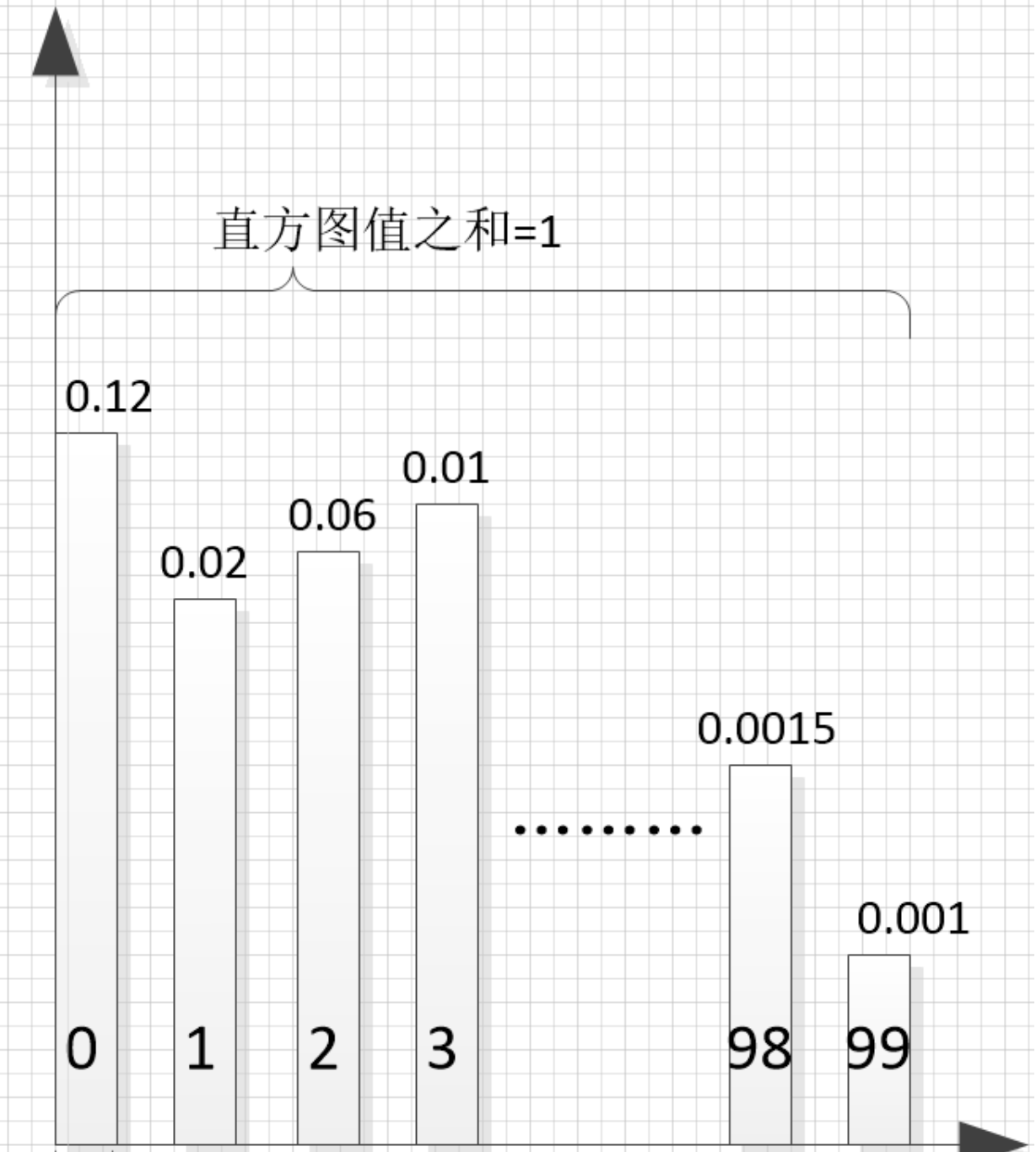webrtc QOS筆記一 Neteq直方圖演演算法淺讀
2023-02-16 18:00:40
webrtc QOS筆記一 Neteq直方圖演演算法淺讀
想起部落格園帳號了,回來填點webrtc qos的坑, 本文分析個很好用的直方圖演演算法,不僅可以在音訊裡面計算抖動延遲,我發現用來統計丟包率也很好用.
Histogram Algorithm
DelayManager::Update()->Histogram::Add() 會根據計算的iat_packet(inter arrival times, =實際包間間隔 / 打包時長),將該iat_packet插入IATVector直方圖對應陣列下標內。並更新該直方圖的資料下標下概率引數。[M88 SRC]

一共有四步操作:
1、用遺忘因子,對歷史資料的出現概率進行遺忘, 並統計概率合

2、增大本次計算到的IAT的概率值。

- 例:
假如歷史bucket 資料為:
buckets_ = {0,0,1,0}
遺忘因子為 0.9:
forget_factor = 0.9
新來的抖動延遲資料為66ms, 桶間為20ms一個單位, 那插入位置為 66 / 20 = 3,則更新後
buckets = {0,0,0.9,0.1}
假若使用%95分位的值作為目標延遲, 則更新後的目標延遲為 60ms.
3、調整本次計算到的IAT的概率,使整個IAT的概率分佈之和近似為1。調整方式為假設當前概率分佈之和為tempSum,則:

4、更新forget_factor_, 使遺忘因子forget_factor_逼近base_forget_factor_
a.使用start_forget_weight_更新(預設初始值start_forget_weight_ = 2,base_forget_factor_=0.9993)

獲取目標延遲
依據probability獲取此百分位的值作為目標延遲(初始值0.97)

int Histogram::Quantile(int probability) {
// Find the bucket for which the probability of observing an
// inter-arrival time larger than or equal to |index| is larger than or
// equal to |probability|. The sought probability is estimated using
// the histogram as the reverse cumulant PDF, i.e., the sum of elements from
// the end up until |index|. Now, since the sum of all elements is 1
// (in Q30) by definition, and since the solution is often a low value for
// |iat_index|, it is more efficient to start with |sum| = 1 and subtract
// elements from the start of the histogram.
int inverse_probability = (1 << 30) - probability;
size_t index = 0; // Start from the beginning of |buckets_|.
int sum = 1 << 30; // Assign to 1 in Q30.
sum -= buckets_[index];
while ((sum > inverse_probability) && (index < buckets_.size() - 1)) {
// Subtract the probabilities one by one until the sum is no longer greater
// than |inverse_probability|.
++index;
sum -= buckets_[index];
}
return static_cast<int>(index);
}
遺忘因子曲線
測試曲線,調整遺忘因子提高抖動估計靈敏度:
#include <iostream>
#include <cstdint>
#include <vector>
uint32_t packet_loss_rate_ = 0;
int main()
{
std::vector<int> input;
std::vector<float> buckets;
float forget_factor = 0.9993;
float val = 0;
for (size_t k = 0; k < 1000; k ++) {
val = val * forget_factor + (1-forget_factor);
buckets.push_back(val);
}
for (int i = 0; i < 1000; ++i) {
std::cout << buckets[i]<< " ";
}
return 0;
}

作者 —— 靑い空゛
出處:http://www.cnblogs.com/ailumiyana/
除特別註明外,本站所有文章均為靑い空゛原創,歡迎轉載分享,但請註明出處。
出處:http://www.cnblogs.com/ailumiyana/
除特別註明外,本站所有文章均為靑い空゛原創,歡迎轉載分享,但請註明出處。